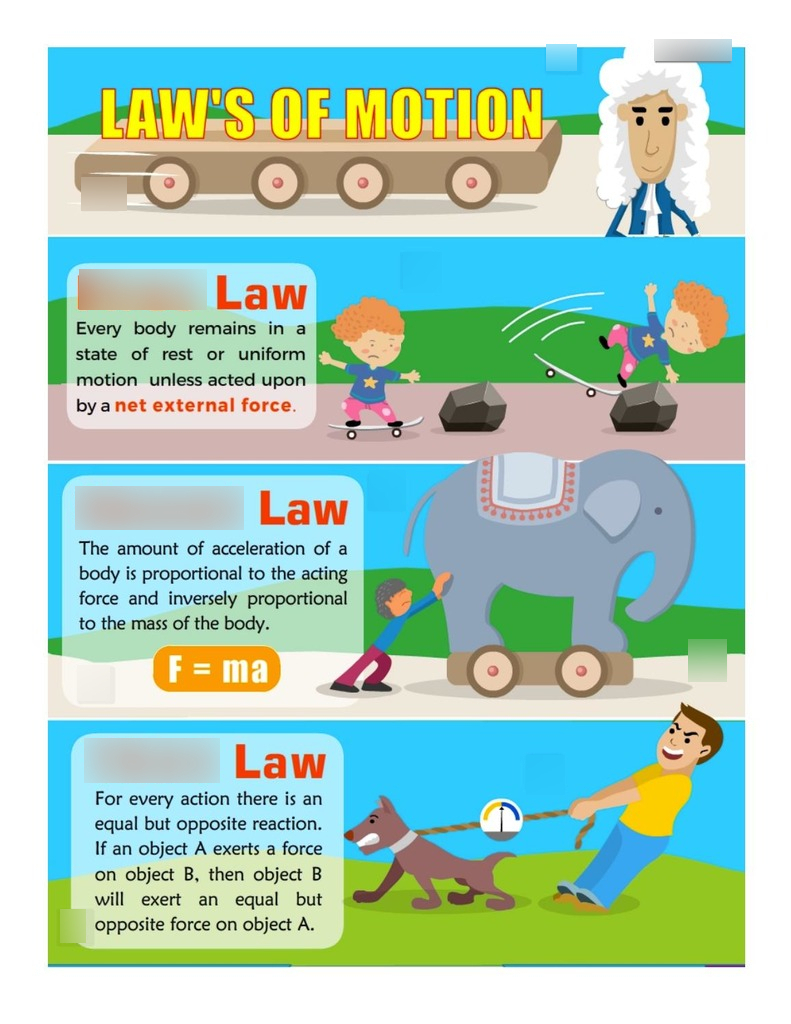
Newton's Laws of Motion
Sir Isaac Newton, one of the most influential scientists in history, formulated three fundamental laws that explain how objects move. These laws, known as Newton’s Laws of Motion, describe the relationship between an object and the forces acting on it, helping us understand everything from everyday movements to the behavior of planets.
1. Newton's First Law: The Law of Inertia
This law states that an object at rest will stay at rest, and an object in motion will stay in motion at a constant speed and direction unless acted upon by an outside force. In simple terms, things don’t start moving, stop, or change direction unless something pushes or pulls on them. This tendency of objects to resist changes in motion is called inertia.
2. Newton's Second Law: The Law of Acceleration
This law explains how the velocity of an object changes when it is subjected to an external force. It is often written as the formula: Force = Mass × Acceleration (F = ma). This means that the force applied to an object equals its mass multiplied by the acceleration it gains. A heavier object requires more force to accelerate, while a lighter object needs less.
3. Newton's Third Law: Action and Reaction
This law states that for every action, there is an equal and opposite reaction. When you push on a wall, the wall pushes back on you with the same amount of force. This principle explains many everyday phenomena, like how rockets launch by pushing gases downward and moving upward as a reaction.
Applications of Newton's Laws
Newton’s laws are used in many fields such as engineering, sports, and space exploration. For example:
- Understanding how cars accelerate and stop.
- Explaining how athletes use force to change direction.
- Designing safe structures that withstand forces like wind and earthquakes.
- Calculating spacecraft trajectories and orbits.
Why Newton's Laws Matter
These laws provide the foundation for classical mechanics — the study of motion and forces. They help us predict how objects will behave, allowing for technological advances and a deeper understanding of the natural world.
Quick Facts
- Newton published these laws in 1687 in his work "Philosophiæ Naturalis Principia Mathematica."
- Inertia is the reason you feel pushed back in a car when it accelerates suddenly.
- The third law explains why swimming pushes you forward by pushing water backward.
Conclusion: Newton’s Laws of Motion are simple yet powerful rules that describe how everything moves. They apply everywhere — from tiny atoms to massive planets — and remain a cornerstone of physics today.